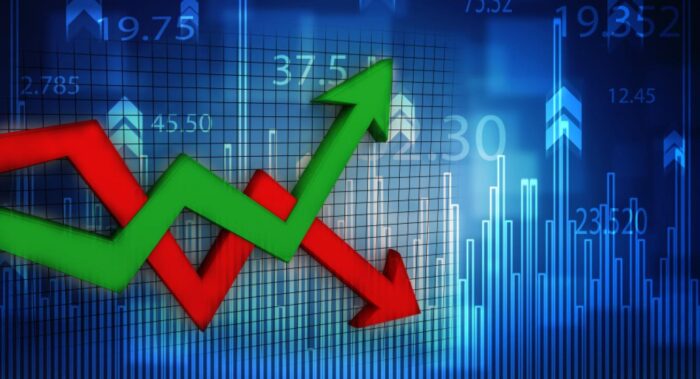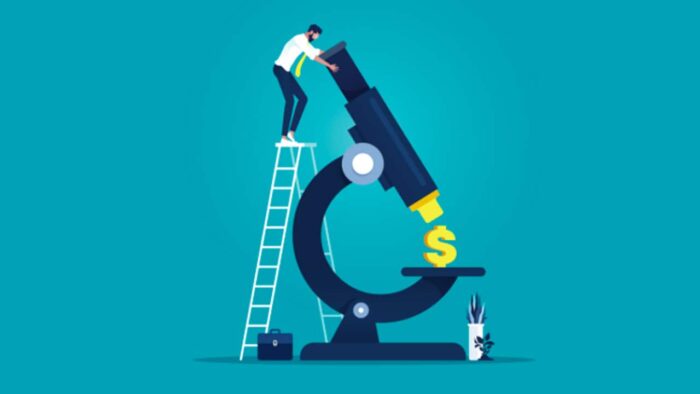
The year 2022 has undoubtedly been a year of many changes in the economies of most countries, which requires us to keep ourselves constantly informed. Let’s get straight into the thick of it.
What is Deflation? Read on for the most complete and insightful answers on this important topic.
Deflation is a decrease in the general price level of goods & services over a specific period. It occurs when there is a decrease in the supply of money and credit or an increase in the supply of goods & services.
In layperson’s terms, deflation means that the things you buy become cheaper over time (with a caveat). Think of it like a grocery sale – the prices of goods are temporarily lowered, and as a result, you can buy more for your money.
The Fallacy Unravels: Prices Don’t Always Rise

Contrary to popular belief, prices don’t always rise. Costs can also fall. This idea is a common misperception about inflation and deflation. Just because prices have gone up in the past doesn’t mean they always will.
In fact, prices were rising in the lead-up to the 2008 financial crisis. Home values across the United States hit sky-high valuations. Then what happened? The market crashed, and demand collapsed. Prices started coming down.
That was the subprime mortgage crisis in all its horror. It’s important to understand that prices are determined by supply and demand, and changes in these factors can cause prices to fall and rise.
Deflation and inflation are two sides of the same coin. Inflation is an increase in the general price level of goods & services over a specific period.
Alternatively, deflation is a reduction in the general price level of goods & services over a specific period. The critical difference between inflation & deflation, is the direction of the change in price levels.
The Impact of Deflation on Wages and Employment
Deflation can have positive & negative effects on wages and employment. From a positive aspect, deflation can result in increased spending and investment, employment, and higher wages.
From a negative perspective, deflation can result in decreased demand for goods & services, resulting in layoffs and decreased wages.
It’s important to understand that the impact of deflation on wages and employment is not always clear-cut and can vary depending on the specific circumstances.
The Pros and Cons of Deflation for Borrowers and Lenders

Deflation can have both positive and negative impacts on borrowers and lenders.
On the positive side, deflation can result in lower rates of interest, making it easier for borrowers to repay their loans.
However, it all depends on the rate of interest you’ve negotiated and agreed to.
There are fixed and variable interest rates. Fixed rates don’t change for the term of your financial obligation. Variable rates do change – but the change can go either way.
On the negative side, deflation can result in decreased demand for goods & services, resulting in reduced lending and borrowing activity.
It’s important to understand that the impact of deflation on borrowers and lenders is not always clear-cut and can vary depending on the specific circumstances.
The Role of Monetary Policy in Deflation
Monetary policy plays a critical role in managing deflation. Central banks, such as the Federal Reserve, can use various tools, such as interest rate adjustments, to control the money supply and credit availability.
These tools can stimulate or slow down the economy and help prevent or address deflation. Therefore, it’s important to understand the role of monetary policy in managing deflation, as it can significantly impact the economy and your finances.
Deflation and the Markets

You likely have an investment plan for the future – stocks, bonds, funds, savings, real estate, cash, jewellery and other valuables. Deflation can have positive & negative impacts on the financial market.
On the positive side, deflation can increase spending and investment, thereby increasing stock prices.
Plus, it can result in diminished demand for goods & services, resulting in reduced stock prices. That’s great if you want to buy the dip but not so great if you’re hoping to boost returns on existing investments.
It’s important for investors to understand the relationship between deflation and the stock market and to be aware of the potential impacts of deflation on their investments.
The Impact of Deflation on Your Spending Behavior
If you’re wondering how deflation affects your budget, read on. Deflation can have both positive and negative effects on you as a consumer.
On the one hand, plummeting prices can result in extra buying power and lower living costs. For example, you can buy more goods & services with the same amount of money you had before.
However, deflation can also lead to decreased consumer spending as consumers tend to hold off on purchases in anticipation of even lower prices in the future. This reduction in consumer spending can result in a slowdown in the overall economy.
You can see how this leads to economic stagnation. That’s the real danger of deflation, folks.
How Does Big Business Deal with Deflation?

Deflation can impact businesses in different ways. On the one hand, lower prices can result in increased demand for goods & services, but on the other hand, it can also lead to lower profits and reduced investment in new projects.
This can result in job losses and slower or lower economic growth. Additionally, businesses with a high amount of debt may struggle in a deflationary setting as the real value of their debt increases.
What About Central Banks & Deflationary Pressures?
Central banks play a crucial role in managing the economy and avoiding deflation. In a deflationary economy, central banks may lower interest rates to encourage borrowing and spending or engage in monetary stimuli, such as printing money, to increase the money supply and boost inflation.
Additionally, central banks may increase the transparency of their policies and provide greater clarity to the market.

Now Let’s Put Everything Together: How to Make Smart Decisions During Deflationary Cycles
Deflation is complex. It’s a macroeconomic status that can significantly impact the economy, investments, and personal finances.
It’s really important to understand the key concepts and factors that contribute to deflation, so that you can make informed decisions about your investments & personal finances.
Like a puzzle, the different pieces of deflation come together to form a picture of how it affects the overall economy.
But remember, folks – deflation is not always a bad thing. It can result in lower prices and increased purchasing power for consumers.
However, if deflation persists for an extended period, it can result in a downswing in economic activity and a decrease in the overall standard of living. And that’s troubling.
Think of deflation like a double-edged sword. On one hand, it can stretch your money further and help you save on purchases.
But it can result in decreased spending and lower economic growth, which can ripple effect on the rest of society.





![Personal Insolvency: Steps to Rebuild Your Financial Health [UK]](https://www.chartsattack.com/wp-content/uploads/2024/07/Personal-Insolvency-1-218x150.jpg)










